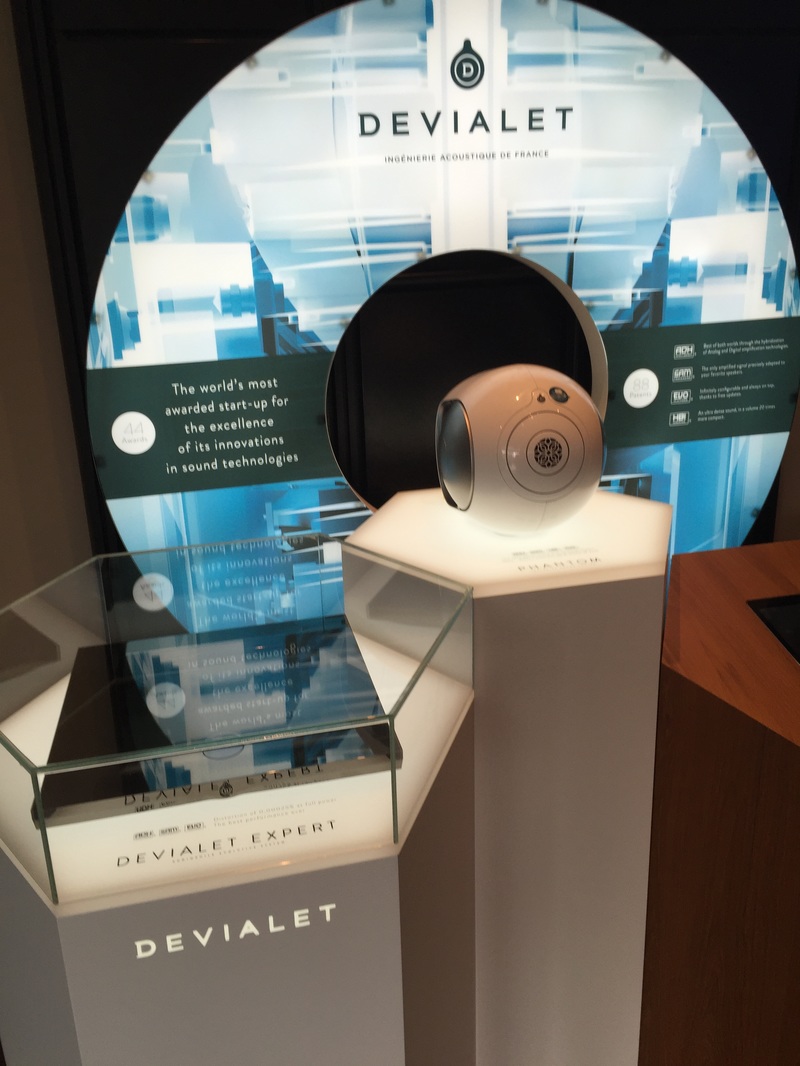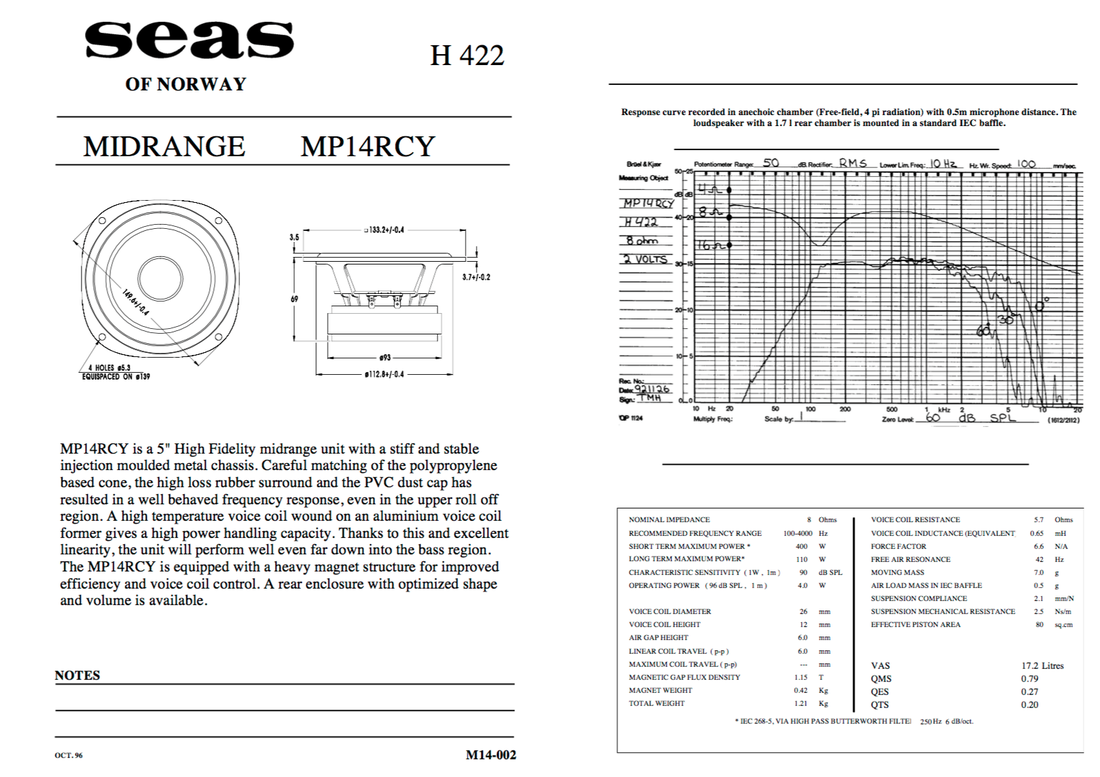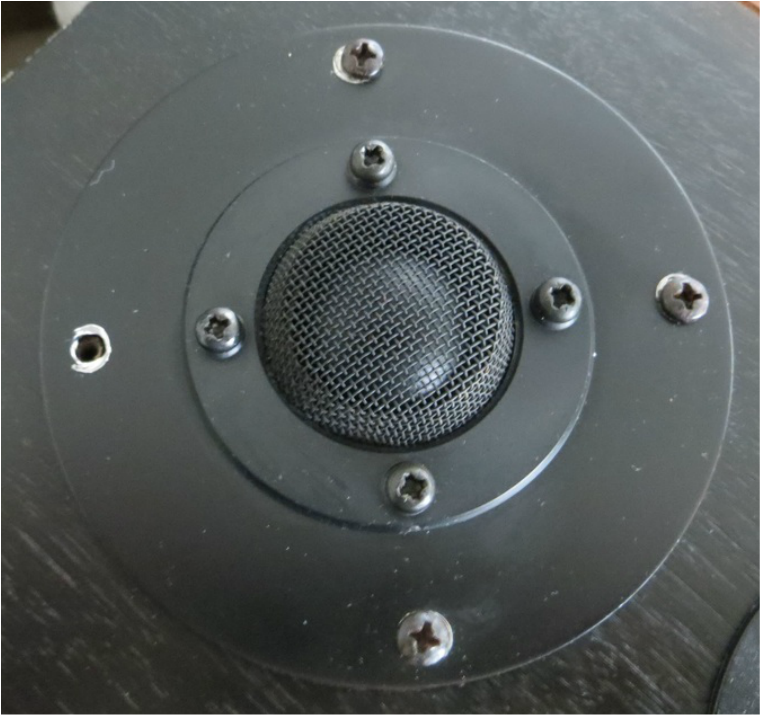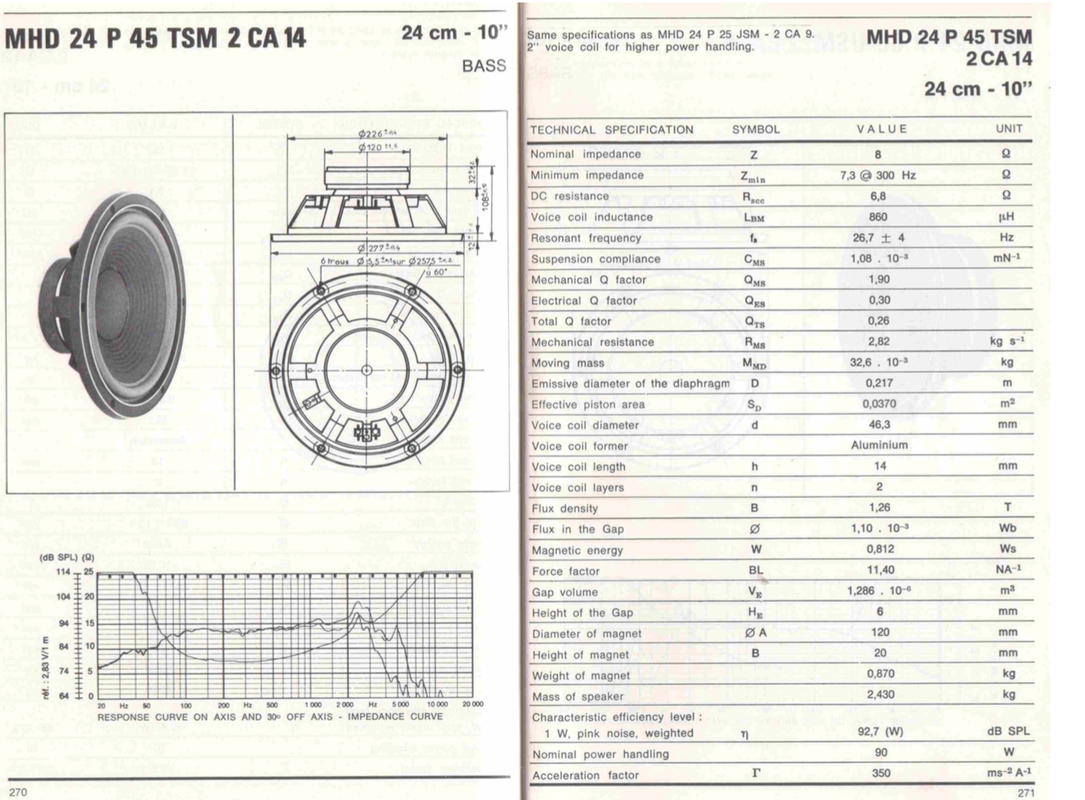|
Devialet is French for Audio Innovation in this new century. Their amplifiers have commanded rave reviews even from not so francophile reviewer and friend Ken Kessler, more a Dan d"Agostino fan than any French contraption, specially involving Class D and all sorts of digital gimmicks! Deviate strikes again with the ultimate boom box aptly named Phantom which just landed in Australia, "10 minutes by Tractor" from home at Len Wallis Audio. (For those of you who follow my food and wine adventures on my other blog, you will now that this is the name of one of my rare favourite winery in Australia...) In one word (or two...) it is not short of sensational! The midrange and tweeter are very similar in concept to Cabasse "La Sphere" although much smaller. The time alignment is taken care of within the sophisticated electronics built in the very heavy armoured cabinet, and this part of the spectrum is amazingly clear and neutral, much more accurate and with a lot less distortion than its Cabasse Big Brother! When it comes to the bass section, one is fooled into believing it is near perfect because one gets mesmerised by the sheer beauty of the movement of the twin woofers on each side of the "object" and the significant amount and extension of bass this thing generates! Devialet claims a 16 Hz bottom end. I was not in a position to check on site, but this contraption does move a lot of air! If you read the specs carefully though, it say that at higher volume the bandwidth is reduced to 49 Hz because the driver would probably destroy itself tryingg to move that much air at a lower frequency. The specification claims that the distortion is below 0.001%, but I doubt this true across the whole frequency range... More on this later! The only way to feed the beast is via Bluetooth and an app on your iThing called Spark which in turn gets fed by Tidal or Qobuz or anything that can stream 44khz/16 bits or up to 192kHz/24bits. You can also connect it to your network via the Ethernet port or to your OPPO player via optical link. Two versions are available, one delivering 750W peak and the other one 3000W!. These numbers are to be taken with a grain of salt though, as they represent the amount of power the electronics are capable of delivering. As there is NO specification of efficiency, it is difficult to know how much acoustic power is really available. However, this plays very loud indeed, to the point that I could not really hear another pair of speakers I was evaluating in an adjacent room with the door duly closed when the Phantom was playing! As I have said before, I think to midrange and tweeter are near perfect, but what about the bass? Where is the trick? Look at this video first and then I will attempt to answer that question. What strike me with the bass drivers is that, although they can move a lot, the return to the rest position seems to be lagging a lot, making me question the low distortion figure...
Don't get me wrong, this is an extraordinary piece of audio and electronic engineering, well worth all the virtual ink it has generated and all the money you would spend on it! And it gets better, as you can use 2 or more of these beats to go stereo or multiform, with its ability to synchronise within 20 microseconds! That f....g quick my friends! A reader from the Netherlands who owns a pair of these speakers, and a talented architect, triggered several weeks of research and accumulation of documents, reading of forums entries to try to tell the story of this iconic brand of French speakers active for 15 years or so... I have to credit again cabinetmaker extraordinaire Jean-Paul Guy for sending me his complete file, including original drawings and hand-written notes from Jean-Claude Fourrière, the founder. Dear readers, this is all pre-CAD, email and Internet. We didn't have mobile phones, and most communications were via landlines and fax machines, or slow mail... Just that alone meant that it took time to get anything done, and mistakes were costly, very... So, with that sort of documentation, producing anything to the standard that GUY HF was producing at the time is a near miracle, and it is a tribute to Jean-Paul that the results were always far superior than these drawings suggest. Here is a copy of the 1985 catalogue But the story starts 10 years earlier when Jean-Claude Fourrière is approached by DECCA to design a monitor loudspeaker using the legendary ribbon tweeter developed by Stanley Kelly. And we don't know how that happened... In most loudspeaker systems the Deccas were used in a passive configuration Later he developed the ALH full range plasma loudspeakers.) Fourrière used the Decca London Ribbon from 2000 Hz. Decca Special Products in England authorized him to use the denomination DECCA and he named his creation Decca AL2000. It was a 3-way system with complementing units from Audax (HD24 and HIF13). He also designed a 2-way system at the time: DECCA AL1500 with crossover frequency of 1500 Hz. The panels of the cabinets were heavily damped with sheets of lead. Photos below courtesy of www.soundfountain.com From that same website, I made the extraordinary discovery that this ribbon tweeter could be compared in performance, and particular high frequency extension to the ubiquitous and far less expensive AUDAX TW8, which Elipson used on their "boules" and that I used in my very first design in 1971, as did Renaud de Vergnette in his first commercial Triangle speaker! What triggered this article as mentioned before, was an email from Jan H. who asked me to help him identify a pair of Audio Reference speakers he owns and to find out some specifications. He ended up sending me a number of great photos that he has given permission to share with you, you insatiable lot of hifi nerds and loyal readers of this blog! The difficulty in identifying these vintage speakers comes from the fact that these small manufacturers were changing their configuration often without changing the model number! This is a perfect example, as the REF 65 in the catalogue above shows both midrange drivers as domes (from SEAS), but this early version (my guess...) uses a MP14RCY from SEAS polypropylene cone. This, I believe, would have been a lot easier to crossover to the 24cm from Audax in the separate but integrated subwoofer. I have personally experimented at the time with a Dynaudio dome midrange and found it very difficult to use for that reason (and I have never been a great fan of Dynaudio drivers, or finished speakers for that matter...) D25This midrange crosses over to two Audax tweeters, the very reputable HD100D25 and TW74, a larger flange version of the famous TW51, described as a super tweeter...and also used by Confluence on their Cantilene, and by myself on the Microphase SAT and many other manufacturers. Audax at that time was producing 10,000 units a day! mainly for TV sets. The bass section is handled by a MHD24 from Audax in a separate enclosure, acting as a bass-reflex loaded subwoofer down to 35Hz. The entire speaker is deemed to go up to 26 kHz! Obviously, with four drivers to take care of, the crossover needs to be quite a complex affair. We would certainly try not to use electrolytic capacitors in a modern design, but technically when they are used in the low pass section, they are not in the signal path and therefore should not have an influence on the quality. However, 30 years later, I would replace these capacitors by a Mundorf or equivalent, just because they are probably not 12 uF anymore and their leakage would be significant and that would move the crossover frequency significantly. All other components are of quite good quality for the time and should still be fine. Although we do not have the value of all components, reverse engineering from the capacitors values and the frequency response of the drivers suggest crossover frequencies of 300 Hz for the woofer at 12dB/oct, 2000 Hz for the midrange and the HD100 at 12dB/oct, then around 4.5Khz for the TW74 at 6dB/oct. Various other resistors and capacitors may have been used to adjust levels and impedance compensation on the TH74, a good way to get reed of a nasty resonance. We might do some more research to clarify, or if somebody has the schematics, then we would be sorted... I do not have a review of that speaker, although I have a number of them for other speakers in the range, which I will publish in a second episode to be published in the coming weeks. In conclusion, Jean-Claude Fourrière was an inventor and a nuclear scientist, and he eventually went broke trying to design a commercially viable plasma headphone and full range speaker, the AHL Toltèque, which also had the benefit of being an open baffle design. Although he got some subsidies from ANVAR, the innovation French body, the product was too difficult to manufacture and the price made it very difficult to afford. Having said that, in his heydays, he had almost a hundred retailers throughout France and was doing quite well exporting to Europe and America.
|
AuthorBorn in France, well travelled, relocated to Sydney in 1997. Archives
July 2023
Categories
All
|






























 RSS Feed
RSS Feed
